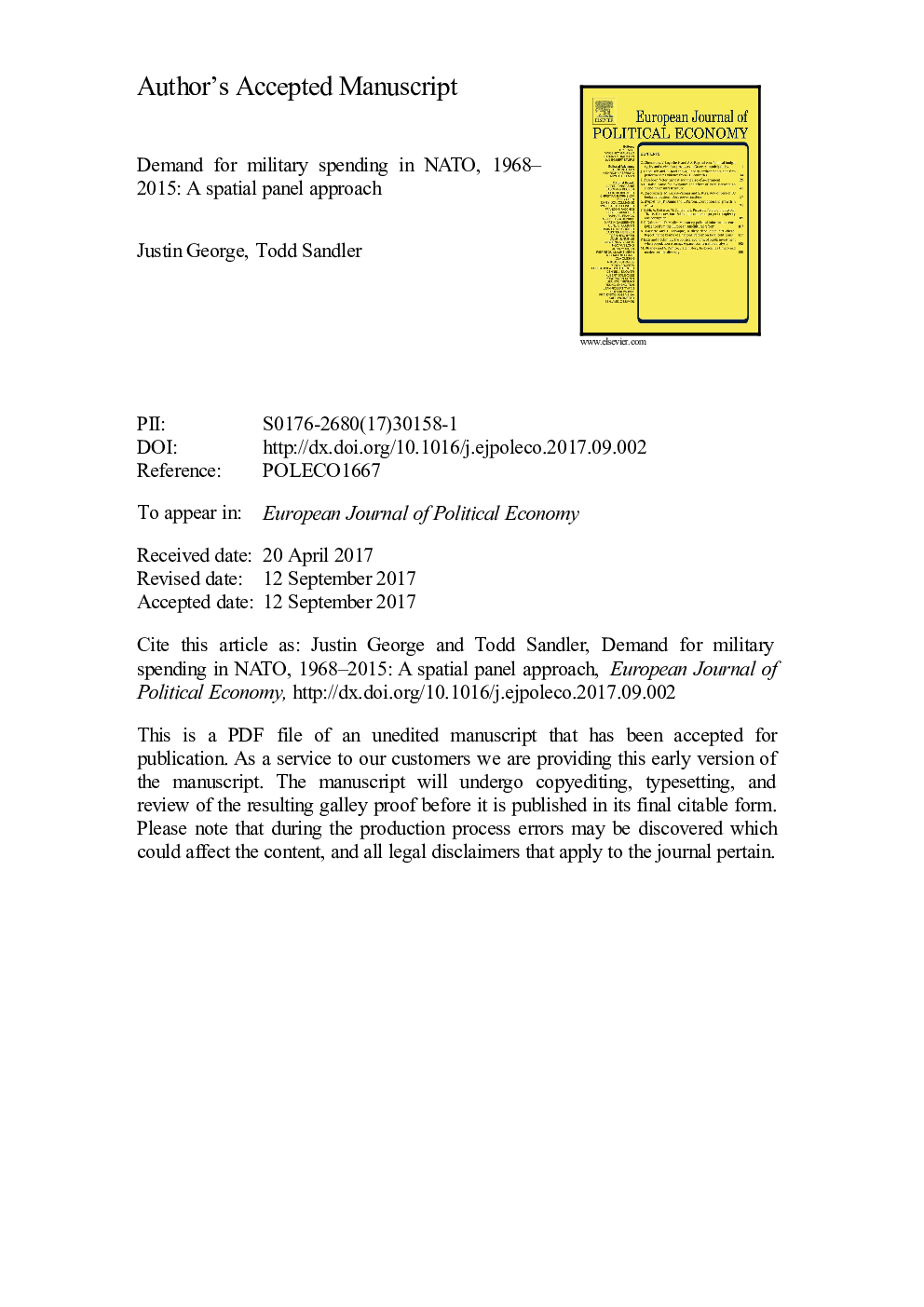| Article ID | Journal | Published Year | Pages | File Type |
|---|---|---|---|---|
| 7351765 | European Journal of Political Economy | 2018 | 43 Pages |
Abstract
This paper presents two-step GMM panel estimates of NATO allies' demand for defense spending during 1968-2015, 1991-2015, and 1999-2015. A novel feature of our NATO estimates is the spatial autoregressive (SAR) weighting of alliance spillovers of defense spending based on ally contiguity (augmented by US defense spending) and inverse distance between allies. The spatial models provide defense demand estimates that are amazingly consistent with those of the standard spillover model. In particular, free riding is prevalent in all three sets of estimates for the three sample periods and changing set of allies. In addition, the influences of the controls are generally robust, including the effect of the change in strategic doctrine in 1975 that augmented the importance of conventional weapons and, thus, spatial factors. We also present mutual assured destruction (MAD) era defense demand estimations dating back to 1960 and 1950 to show that spatial-based spillovers only matter in the post-MAD era after 1974.
Related Topics
Social Sciences and Humanities
Economics, Econometrics and Finance
Economics and Econometrics
Authors
Justin George, Todd Sandler,
